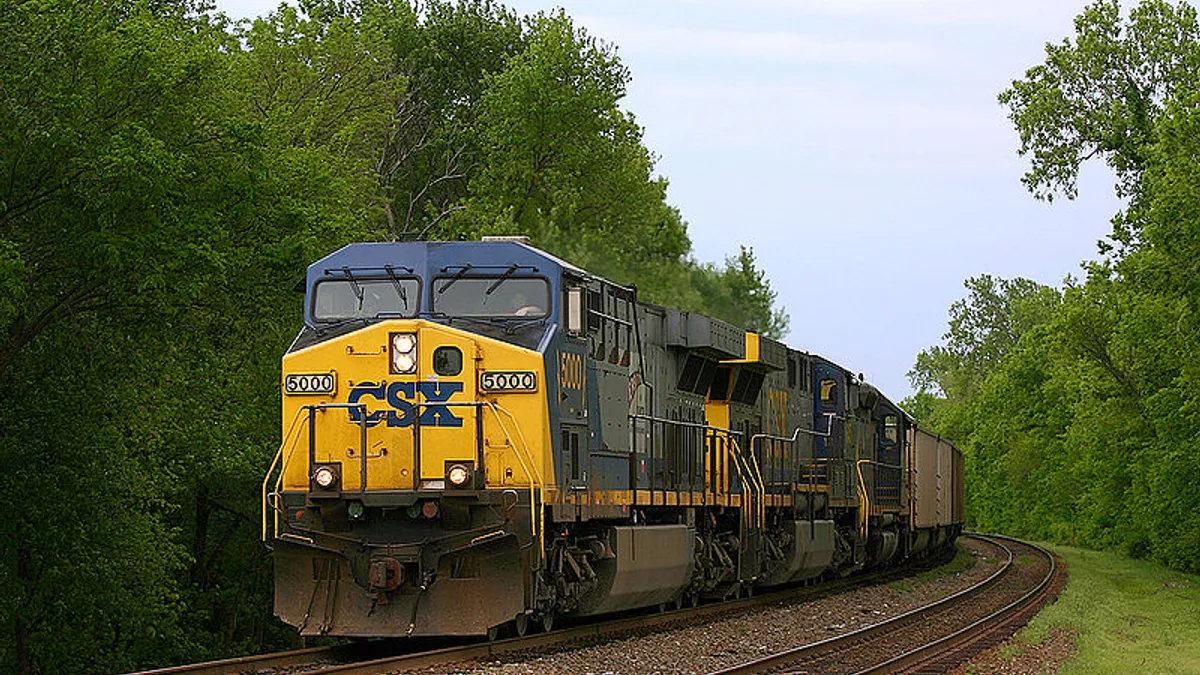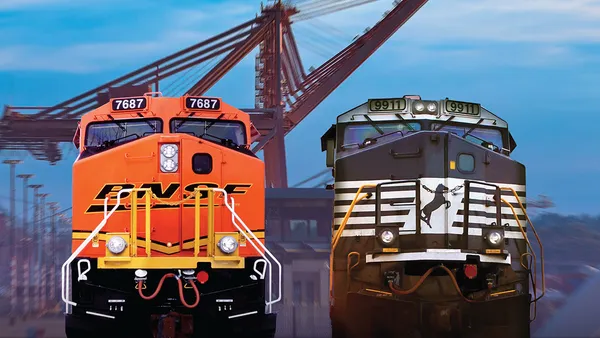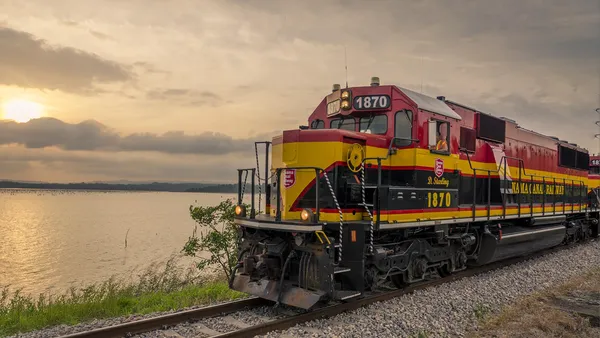Dive Brief:
- Intermodal revenue dipped at CSX in the first quarter as almost all other freight categories, including laggards such as coal, ticked up, according to executives on the railroad's first-quarter earnings call Tuesday.
- "Intermodal revenue declined by 5% on 5% lower volumes due to the additional lane rationalizations implemented following peak season," CEO Jim Foote said. First-quarter revenue increased 5% from the same period in 2018.
- Executives said the railroad's current focus was not on volume growth, but on profitable growth. Executive Vice President of Sales and Marketing Mark Wallace said high single-digit growth in intermodal revenue would be a reasonable guess for years to come after lane rationalizations are complete.
Dive Insight:
Last year, CSX pledged to hold off on further lane rationalizations until peak season was over. Now, work has resumed and the railroad has cut more short-haul service in an ongoing effort to reduce stops and increase the overall velocity of the network. Foote said that though the cuts clearly affected intermodal revenue this past quarter, the benefit to the railroad as a whole is evident.
"We took off 7% of the business last year and we finished the year up 2%," said Foote on the call. "So those growth rates that Mark is talking about, upper single-digit, are clearly not unrealistic once we get our network in order ... Again, our intermodal service, I think right now is pretty fantastic."
Intermodal dip aside, Foote described further progress on CSX's journey toward efficiency. It has been two years since the late Hunter Harrison took the helm and began implementing the tenets of precision-scheduled railroading (PSR).
- For the first quarter, cars online were down 10% while gross ton-miles per available horsepower was up 9% year-over-year — an indication that fewer assets are moving with greater velocity.
- Headcount was down 5% while gross ton-miles per active train and engine employee was up 8% — greater velocity with less labor.
- Operating ratio, seen by many as the north star of PSR, was down below 60% (59.5%) as Foote had previously promised.
But is all this streamlining to improve the operating ratio and investor outcomes hurting CSX's mission (along with every other Class I) of pulling freight off of the highways and onto the rails?
Foote says no, even though trucking rates are already looking much softer in 2019 than they did in 2018.
"We already know that the customers are paying 15% to 20% more to ship by truck in those market segments," he said. "So the spot market pricing of trucks really is irrelevant. It’s all about how much we can improve our service, which will allow us to grow our business in the future in merchandise."
He went on to say reliability is what the railroads need to prove to shift volume from trucks to railcars and in Foote's view, CSX is gaining that trust.
"We have a product now that the customers are willing to rely upon and give us more of their transportation spend, whereas in the past, they’ve maybe given 50% or 60% of the volume to rail and 40% to truck, because they didn’t trust the reliability of the railroad to get their products across to market," he said. "And that is where we are seeing our growth come from. It is from our existing customers to a large degree, where we are gaining a larger share of their transportation spend each and every day, and hopefully that will continue."














